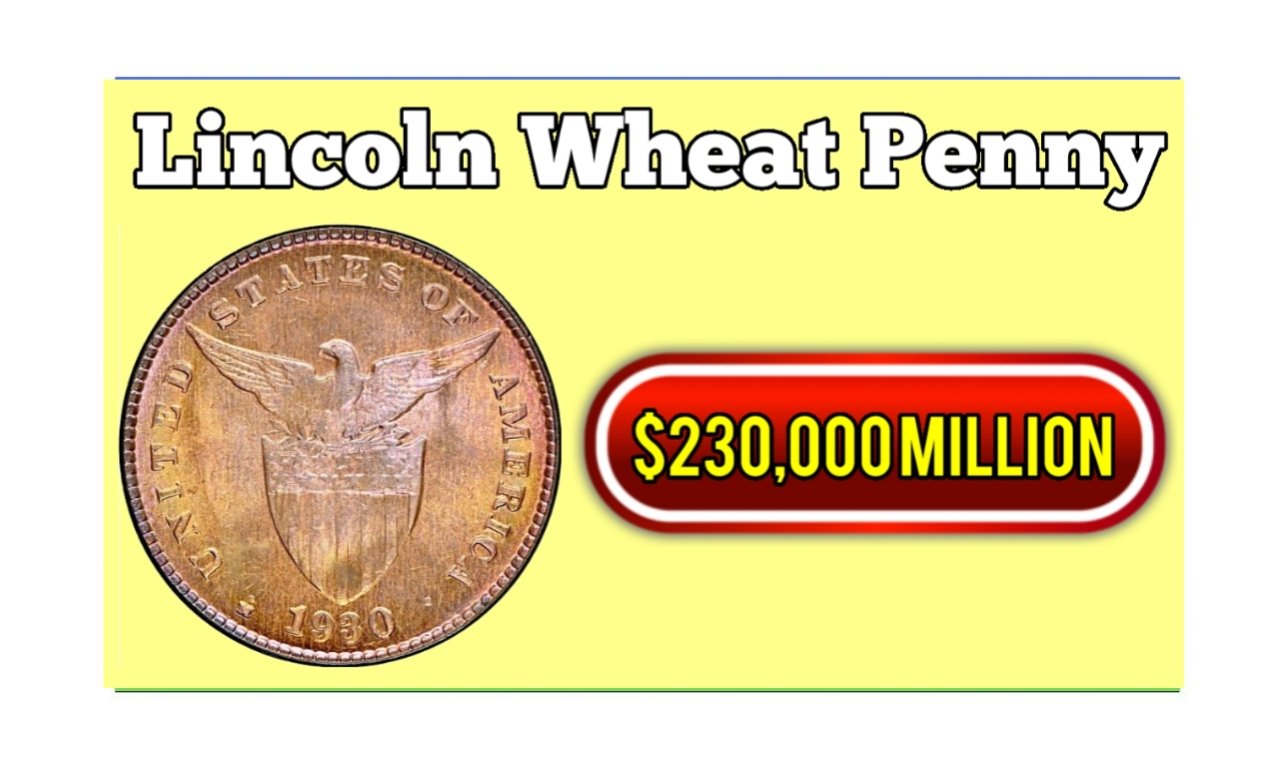Have you ever sifted through a jar of old coins and wondered if any were worth more than face value? What if I told you that a simple penny—one you might have overlooked a hundred times—could be worth a jaw-dropping $230,000?
That’s right. Some Lincoln Wheat Pennies, minted between 1909 and 1958, are among the rarest and most valuable coins in U.S. history. And believe it or not, one might still be hiding in your spare change.
A Brief History of the Lincoln Wheat Penny
The Lincoln Wheat Penny was introduced in 1909 to commemorate the 100th anniversary of Abraham Lincoln’s birth. It was the first U.S. coin to feature a real historical figure—a bold move at the time.
Key Features:
- Obverse (Front): Abraham Lincoln’s profile
- Reverse (Back): Two wheat stalks framing the words “ONE CENT”
For nearly 50 years, this design remained in circulation, making it one of the most recognizable coins in American history.
The Rare 1943 Bronze Penny: A Million-Dollar Mistake
The most famous (and valuable) Lincoln Wheat Penny is the 1943 bronze version. Here’s why:
- Wartime Change: In 1943, the U.S. Mint switched from copper to steel-coated zinc to conserve copper for World War II efforts.
- A Rare Error: A few leftover bronze planchets (coin blanks) from 1942 were accidentally struck with the 1943 date.
- Extreme Rarity: Only about 10-20 of these pennies are known to exist today.
One of these coins sold for over $230,000—and if you find one, you could be sitting on a fortune.
Other Valuable Lincoln Wheat Pennies
Year & Variety Why It’s Valuable Estimated Value (High Grade) 1909-S VDB Designer’s initials (VDB) on reverse; low mintage $1,500 – $3,500+ 1914-D Low mintage from Denver Mint $200 – $5,000+ 1922 No D Weak strike, missing mint mark $500 – $15,000+ 1931-S Low production during the Great Depression $100 – $2,000+ 1943 Bronze Accidental copper strike $100,000 – $230,000+
How to Check if Your Penny Is Valuable
1. Look for Key Dates
The most valuable pennies include:
- 1909-S VDB
- 1914-D
- 1922 No D
- 1931-S
- 1943 (Bronze, not steel)
2. Check the Mint Mark
- No mint mark = Philadelphia
- “D” = Denver
- “S” = San Francisco
Coins from San Francisco (S) and Denver (D) are often rarer.
3. The Magnet Test (For 1943 Pennies)
- A steel 1943 penny will stick to a magnet.
- A bronze 1943 penny (the ultra-rare one) will not stick.
4. Examine the Condition
A penny in uncirculated condition with sharp details and minimal wear can be worth thousands more than a worn one.
Could a Rare Penny Still Be in Circulation?
It’s unlikely—but not impossible. Over the years, people have discovered valuable coins in:
- Old coin collections
- Jars of spare change
- Inherited belongings
- Garage sales or flea markets
The thrill of the hunt keeps collectors searching!
FAQs About Valuable Lincoln Wheat Pennies
1. How much is a 1943 copper penny worth?
A genuine 1943 bronze penny can sell for $100,000 to $230,000+ depending on condition.
2. Are all 1943 pennies valuable?
No—only the copper/bronze ones. Most 1943 pennies are steel and worth only 10¢ to $1.
3. What’s the rarest Lincoln Wheat Penny?
The 1943 bronze penny is the rarest, followed by the 1909-S VDB.
4. Where is the mint mark on a Lincoln Wheat Penny?
It’s located below the date on the obverse (front) side.
5. Can I sell a rare penny myself?
Yes! You can sell through:
- Coin dealers
- Auction houses (like Heritage Auctions)
- Online marketplaces (eBay, specialized coin forums)
Final Thought: Start Checking Your Change!
You never know—that old penny in your drawer could be worth a life-changing amount. So next time you see a wheat-back penny, take a closer look. It might just be your lucky day.
Have you ever found a rare coin? Share your story in the comments!




